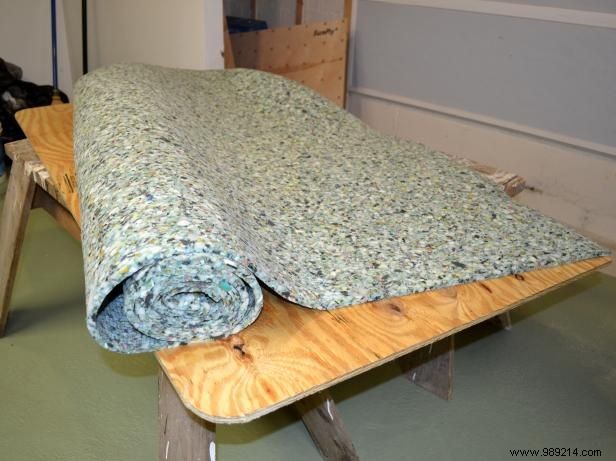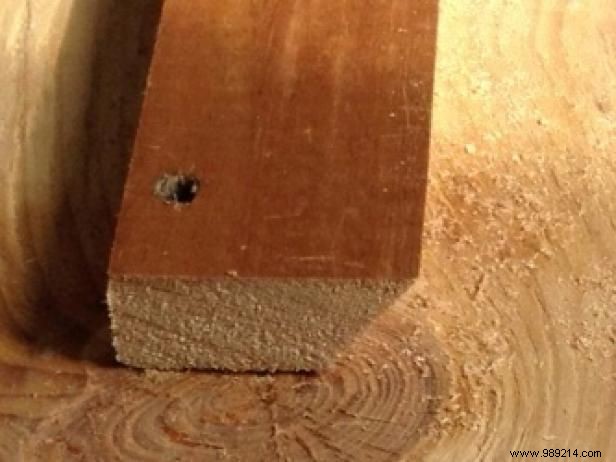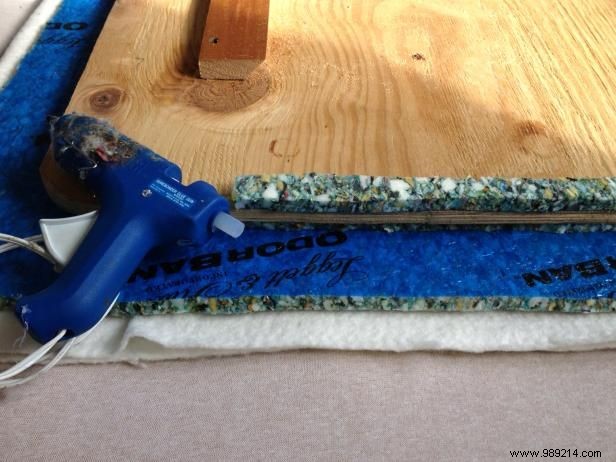
Use a compass or a round object to mark the radius of the corners of the curved header. To make it easier, we just use a roll of tape.

Use a hacksaw to cut the bow at the top two corners; Leave the bottom two corners at 90 degrees.

Cut the carpet padding at least three inches wider than the plywood on all sides. Don't skimp on the extra inches. It is better to start with a larger piece than one that is too small. Save the excess pieces of carpet padding for later.

Make a French cleat to hang the headboard on the wall. Cut a 1x6 in half lengthwise at a 45 degree angle. Determine how high you want the headboard to hang. Mark the wall and the back of the headboard. Attach one piece to the wall with the long end of the angle facing up on the outside. Use a level to make sure it's straight, and then attach it to a wall stud with at least 2-1/2” screws. Check that the two cleat pieces slide together before attaching the other piece to the back of the header. Use 1-1/2” screws to attach the other piece of 1x6 to the back of the plywood. Position it so the long end is on the outside facing down (our cove was placed about 5" from the top of the plywood).

On a clean work surface, lay the vinyl face down, then the batting, then the carpet padding. Finally, center the plywood on top of the filler.

When you put the padding on the back of the plywood, you'll want to double the thickness around all the edges. This will give the headboard a great quilted look and will also allow the headboard to sit off the wall so it is vertically level with the French cove. This way, it won't move or tilt down. The easiest way to do this is to use strips cut from the carpet padding and attach it to the plywood on all four sides. Use hot glue to adhere the strips.

Start in the middle of one of the long sides. Pull the carpet padding and batting taut and staple them to the plywood. If you are having trouble with the layers slipping, apply hot glue to the underside of the carpet padding and affix it to the plywood. Then lay the batting on top of the padding and staple it to the plywood. Trim some of the padding in the corners so they are smooth.

Attach each side of the vinyl to the plywood before stapling it all the way around the board. Starting in the center of one of the long sides, pull the vinyl up and fasten it to the back of the plywood with one or two staples. Move to the opposite side and repeat. Then add a staple or two to the two shorter sides. Before proceeding, flip the board over to make sure the vinyl is positioned exactly how you want it. If not, remove the few staples and start over. Continue stapling on the sides and continue to the corners. If the material is bunching up in the corners, cut it so it is flat. Use a hammer or mallet if the staples do not fully penetrate the wood.

Susan Teare, Joanne Palmisano
Slide the headboard over the wall staple. Make sure it's level and centered.